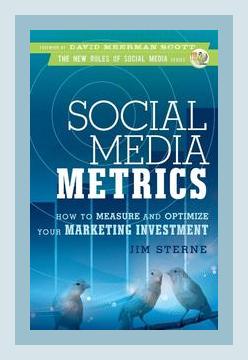Marketing and SalesMarket Research
Introduction
“Social Media Metrics: How to Measure and Optimize Your Marketing Investment” by Jim Sterne, published in 2010, is a foundational text in the realm of social media marketing and analytics. Sterne presents a structured guide for professionals to measure and optimize their investments in social media marketing effectively. This summary will cover the key points from the book, including concrete actions that can be taken by marketers to implement Sterne’s advice.
Chapter 1: Understanding Social Media Metrics
Key Points:
-
Definition and Importance: Social media metrics are defined as measures used to track the performance and impact of social media activities. Understanding these metrics is crucial for justifying investments to stakeholders.
-
The Goal of Measurement: The purpose of measuring social media activities is not just to collect data, but to derive actionable insights that can influence strategies.
Specific Action:
- Action: Start by defining clear, measurable goals for your social media campaigns (e.g., increasing brand awareness by 20% over six months).
Chapter 2: The Hierarchy of Objectives
Key Points:
-
Campaign Objectives: Objectives can be divided into three tiers – exposure, engagement, and influence/action.
-
Measurement Tools: Use a combination of qualitative and quantitative tools to measure each tier.
-
Concrete Metrics Examples:
- Exposure: Number of followers, likes, shares.
- Engagement: Comments, retweets, shares.
- Influence: Website traffic from social media, conversions, sales.
Specific Action:
- Action: Implement a measurement framework that categorizes your metrics into exposure, engagement, and influence to regularly monitor and adjust your campaigns.
Chapter 3: Data Collection
Key Points:
-
Tools and Platforms: Use readily available tools like Google Analytics, Facebook Insights, and Twitter Analytics to gather data.
-
Integrating Data: Combine data from multiple sources for a comprehensive understanding.
-
Qualitative Data: Collecting customer feedback and sentiments is equally important.
Specific Action:
- Action: Use a third-party tool like Hootsuite or Buffer to consolidate data from various social media platforms, allowing for easier analysis and reporting.
Chapter 4: Analyzing the Data
Key Points:
-
Identifying Key Metrics: Focus on key performance indicators (KPIs) that align with business goals.
-
Segmentation: Segment data by demographics, geography, or behavior for more detailed insights.
-
Trends and Patterns: Look for long-term trends rather than being reactive to short-term fluctuations.
Specific Action:
- Action: Conduct a monthly analysis of KPIs and create a dashboard to track changes over time, helping in identifying patterns indicative of campaign performance.
Chapter 5: ROI – Return on Investment
Key Points:
-
Calculation of ROI: Balance financial metrics (revenues, costs) with non-financial ones (brand sentiment, engagement levels).
-
Attribution Models: Use multi-touch attribution models to assign value proportionately to all touchpoints.
-
Challenges: Understand and navigate the complexities involved in calculating the true ROI of social media efforts.
Specific Action:
- Action: Develop an ROI calculation model specific to your organization that combines various direct and indirect financial benefits from social media.
Chapter 6: Listening
Key Points:
-
Importance of Social Listening: Listening to social conversations around your brand is crucial for strategy adjustment.
-
Tools for Listening: Utilize tools like Social Mention, BuzzSumo, or Brandwatch for real-time monitoring.
-
Qualitative Insights: Listening helps in capturing customer sentiment and brand perception.
Specific Action:
- Action: Implement a social listening strategy that includes daily monitoring of mentions, keywords, and hashtags related to your brand, competitors, and industry.
Chapter 7: Engagement Metrics
Key Points:
-
Types of Engagement: Classify engagement based on likes, shares, comments, and direct messages.
-
Quality over Quantity: The depth of engagement is more important than the sheer number of interactions.
-
Content Resonance: Determine what type of content drives the highest level of engagement.
Specific Action:
- Action: Identify and categorize the types of content (videos, blogs, images) that result in the highest engagement and tailor your content strategy accordingly.
Chapter 8: Influence Metrics
Key Points:
-
Understanding Influence: Influence goes beyond engagement; it’s about driving action or change in behavior.
-
Identifying Influencers: Tools like Klout or Kred can help identify and measure the influence of key individuals.
-
Network Analysis: Map out the network of interactions to find key influencers who can drive brand messaging.
Specific Action:
- Action: Create a targeted influencer strategy that involves partnering with highly influential figures in your industry to amplify your message.
Chapter 9: Customer Metrics
Key Points:
-
Customer Acquisition and Retention: Track metrics that reflect how social media contributes to acquiring new customers and retaining existing ones.
-
Customer Lifetime Value (CLV): Measure the total worth of a customer over the lifetime of their relationship with your brand.
-
Customer Support and Service: Utilize social media for customer support, tracking resolution times and satisfaction levels.
Specific Action:
- Action: Develop a customer journey map that includes acquisition channels from social media, allowing you to see the direct impact of social efforts on customer lifecycle stages.
Chapter 10: Reporting
Key Points:
-
Tailored Reports: Create reports that cater to different stakeholders (executive summary for C-level, detailed analysis for marketing teams).
-
Visuals and Dashboards: Use data visualization tools to make complex data understandable and actionable.
-
Timeliness: Regular reporting schedules (weekly, monthly) ensure that insights are timely and actionable.
Specific Action:
- Action: Use visualization tools like Tableau or Google Data Studio to create interactive dashboards that stakeholders can access and understand easily.
Conclusion
Jim Sterne’s “Social Media Metrics” is a comprehensive guide to not just measuring but understanding and optimizing social media marketing investments. By setting clear goals, leveraging the right tools, analyzing the right metrics, and making data-informed decisions, marketers can transform social media data into valuable insights. The book helps bridge the gap between raw data and actionable strategy, making it an essential read for anyone looking to maximize their social media ROI.
By focusing on concrete actions and real-world applications, Sterne’s book ensures that marketers can take practical steps to improve their social media efforts, ultimately leading to a more strategic and effective marketing approach.
